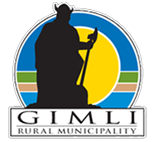Seeing Green to protect our lakes and rivers
No matter where you live - by the lakeshore, in the city, or on a farm - there are many things you can do to contribute to the health and restoration of Lake Winnipeg. Here are some suggestions.
Restore your shoreline to a more natural state.
This would include a buffer strip of natural vegetation on your property, aquatic plants in the water and rocks on the lake bed. In addition to creating favourable habitat for a variety of animals, including fish and birds, it also improves water quality and reduces erosion. The reason nearshore vegetation improves water quality is because it acts as a filter for nutrients and contaminants running off of the land. Many aquatic plants, such as cattails, are very effective at taking up nutrients and contaminants (like heavy metals) thereby reducing their entry into the lake. The roots of shoreline vegetation also stabilize the soil and reduce erosion from both terrestrial runoff (from land) and from wave action.
Ensure that your septic system is in good shape, with no leaks.
Poorly maintained septic systems can contribute nutrients and pathogens (viruses and bacteria) to the groundwater. Groundwater travels underground, similar to flowing rivers, and makes its way to surface waters such as lakes. That means your leaking septic tank could contaminate your well water, your neighbour’s well water, rivers and lakes.
Do not flush anything down your toilet that shouldn’t ‘traditionally’ go down a toilet, such as medications and chemicals.
Municipal sewage treatment plants are primarily designed to treat human waste. Once treated, the effluent is generally released into rivers which ultimately make their way to Lake Winnipeg (if they are within the lake’s vast watershed). If you put other substances down the drain, toilet or sewer, they may not get adequately treated before being released back into the environment.
Reduce your use of phosphorus.
In addition to inadequate sewage systems, other sources of phosphorus include lawn fertilizers, manure on agricultural land and detergents. Any phosphorus that is not used by plants gets washed off the land and into the water system which ultimately drains into Lake Winnipeg. Any phosphorus going down your drain has the same fate. Dishwasher detergents are the worst! In aquatic systems, too many nutrients, especially phosphorus, cause excessive algal growth. When algae die, their decomposition uses up oxygen in the water and other living organisms, such as fish, suffocate and die.
Keep large animals, such as cattle, away from shorelines of streams, rivers and lakes.
This will reduce the amount of erosion caused by trampling and will maintain the integrity of the vegetation along the shore. It also reduces the amount of manure, and therefore nutrients, entering the water.
Reduce the impacts caused by your recreational activities.
This includes reducing your powerboat’s speed when close to shore so as not to create a wake. Do not drive your ATV in shallow water. Take care not to spill gas into the lake. Do not pump bilge into the water. Minimize your use of boat engine cleansers – they contain highly toxic chemicals. Do not paint your boat with a paint that contains tributyltin – this is an anti-fouling agent that works by releasing toxins into the water. Do not dump your grey water into the lake. Needless to say, never dump your on-board toilet contents into the water.
Additional Resources:
